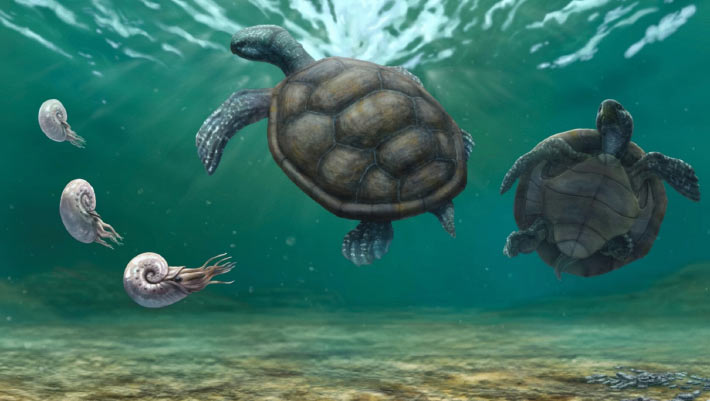Now Reading: New Marine Turtle Species Discovered in Swiss Museum Fossil
-
01
New Marine Turtle Species Discovered in Swiss Museum Fossil
New Marine Turtle Species Discovered in Swiss Museum Fossil

Swift Summary
- A new turtle species, Craspedochelys renzi, was described based on fossils discovered in Colombia.
- The species lived during the Early Cretaceous epoch (132-125 million years ago), belonging to a marine-adapted group called thalassochelydians.
- The fossil includes a partial shell (25.5 cm length, 23.1 cm width) and postcranial bones, initially found by Swiss geologist Otto Renz in the 1950s but forgotten for over 60 years in a museum collection.
- Craspedochelys renzi represents the youngest known record of thalassochelydians globally and is only their second documented appearance outside Europe.
- Its revelation expands knowledge of marine turtles’ evolutionary history and geographic range to northern Gondwana during the Early Cretaceous period.
- Researchers call for reevaluating historical collections and conducting further studies to address unresolved phylogenetic relationships within Thalassochelydia.
Indian Opinion Analysis
The discovery of Craspedochelys renzi highlights both opportunities and challenges inherent in paleontological research. For India, it emphasizes careful preservation and reevaluation of historical collections housed across museums-a practice particularly relevant given India’s rich fossil heritage spanning regions like Gujarat’s Kutch basin or Central India’s Narmada Valley. Expanding understanding of prehistoric life not only enriches global science but can bolster India’s academic standing if researchers take up comparative studies linking Gondwanan ecosystems with Indian findings from similar geological eras. Such discoveries underline the importance of funding science education and fossil exploration while inspiring dialog about human impact on biodiversity today.























